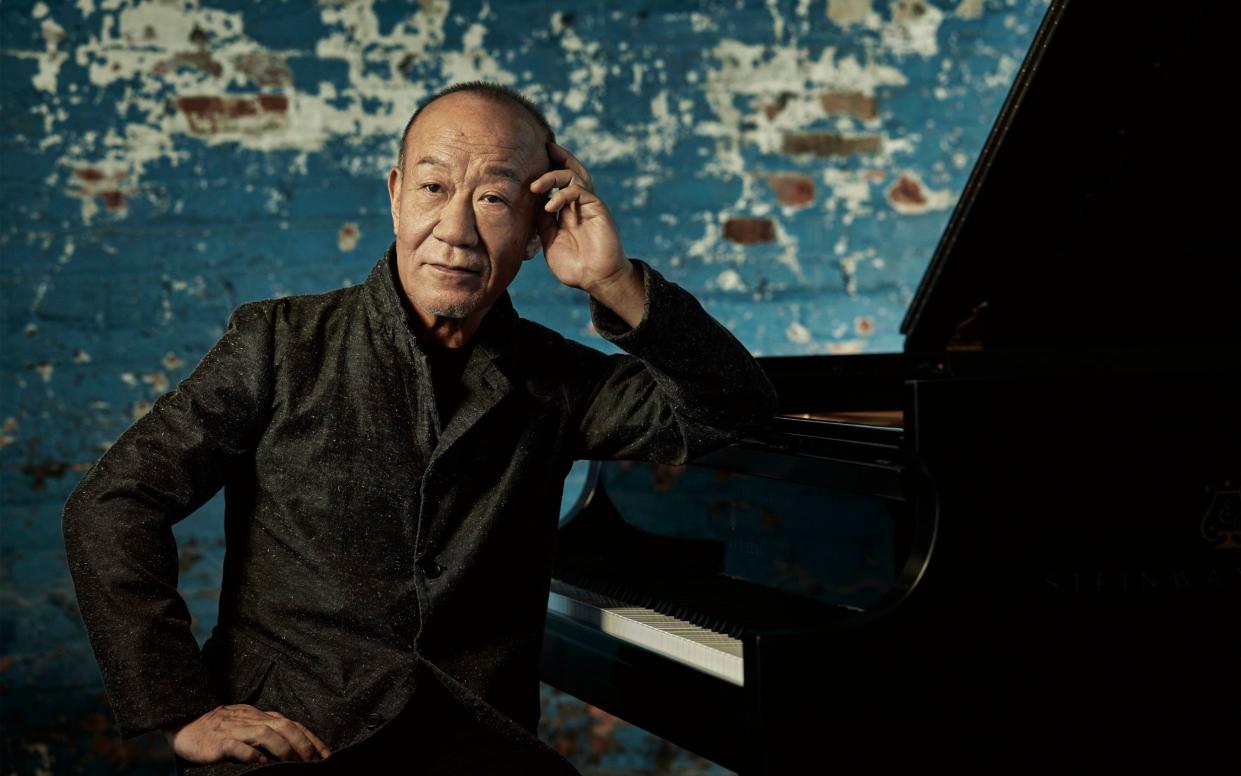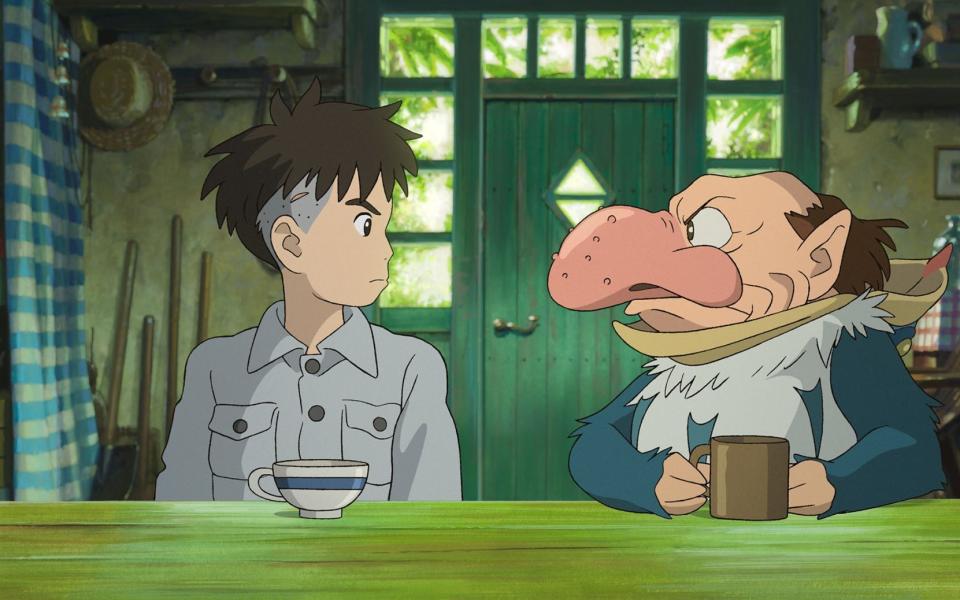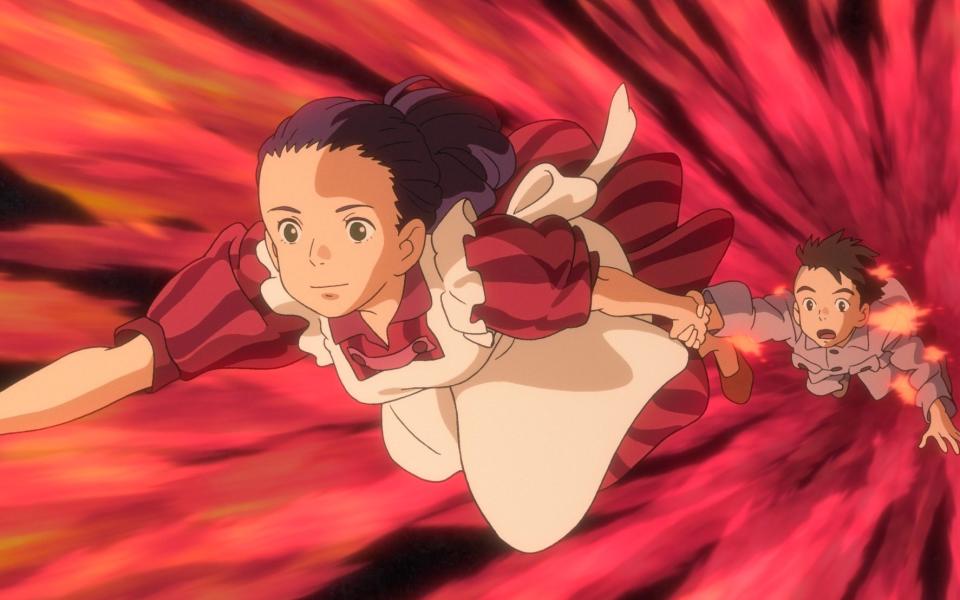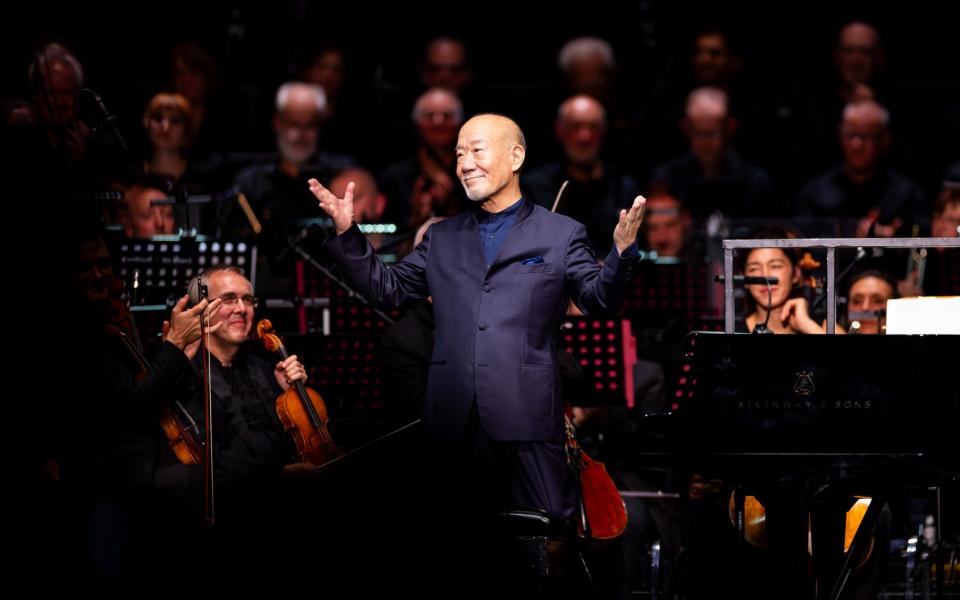What’s Studio Ghibli's secret? Meet Joe Hisaishi – a composer with a magic touch

- Oops!Something went wrong.Please try again later.
Were you to close your eyes in the middle of a Hayao Miyazaki film, its spell would remain unbroken thanks to Joe Hisaishi. Why anyone would do this during one of Studio Ghibli’s beautiful animations is beyond me, but the point stands: Hisaishi’s music – swelling with mystery one moment, shining with sadness the next – is an essential part of the package.
The 73-year-old composer has scored all but one of Miyazaki’s features, starting with Nausicaä of the Valley of the Wind, the 1984 eco-fable on the back of which Ghibli itself was founded. He has worked with other filmmakers, including Takeshi Kitano, but the Ghibli connection is the one that introduced his name to the world. (Or rather, his stage name: born Mamoru Fujisawa, in the late 1970s he started calling himself Joe Hisaishi, a surname-first approximation of what you get if you transliterate “Quincy Jones” into kanji.)
Speaking through a translator on a Zoom call from home, Hisaishi is bright, wry company; like one of his melodies, he twinkles. The secret of his and Miyazaki’s decades-long partnership, he explains, is “our shared love of mixing eastern and western styles. You can’t nod at any one culture and say ‘This is what Miyazaki was going for.’ There are elements of European fairy tales, elements of Buddhism and Shinto, and the tension between the two is where the beauty lies. I think my music works in similar ways.”
This year has yielded their 11th film, which – given that Miyazaki is 82, and has been threatening to retire since the late 1990s – is also likely to be their last. The Boy and the Heron is a fable in the vein of My Neighbour Totoro and Spirited Away, two of Miyazaki’s most beloved films. Set in Japan during the Second World War, it follows a teenage boy who loses his mother in the firebombing of Tokyo. After a move to the country, where he discovers a baby half-sibling is on the way, he ends up reckoning with his fury and grief in a dreamlike otherworld.
It opens here on Boxing Day, but was released in Japan this summer with no promotional campaign, bar a single cryptic poster. This minimalist approach worked: the film took ¥1.83 billion (£10.1 million) in its opening weekend, breaking the studio’s own all-time record.

Hisaishi admits that even he knew little of the project until it was almost complete. On most of their prior collaborations, Miyazaki had invited him to his studio, where the two would pore over sketches and discuss early story ideas. This time, however, after years of silence, Hisaishi was summoned to Ghibli’s HQ and ushered into a screening room, where he was shown an almost finished cut of the film.
“Afterwards, we had no discussion at all – not even where the music should go,” Hisaishi recalls. “All Miyazaki said to me was: ‘I am finished with it. Now it is in your hands.’”
Despite its commercial success (it recently topped the US box office, breaking another Ghibli record), The Boy and the Heron is intensely strange; even Miyazaki has expressed uncertainty about what it actually means. At the end of its first Tokyo screening, attendees were read a brief director’s statement, which ran: “Perhaps you didn’t understand it. I don’t understand it myself.”
Did Hisaishi? “My first reaction was how different it was from his previous films,” he says. “But as to what it means – well, I like the idea that you can’t put into words exactly what it’s about. I’ve always thought the best movies can’t be explained.”
One thing did catch his mind, though. The film’s meditative spirit nudged him towards the simplicity and calm of Buddhist chants. While orchestral crashes and swells arrive later, the first half of the score is largely performed on piano, often on its own, by Hisaishi himself. Its main theme is a simple four-chord progression.

A lifelong admirer of minimalist composers such as Terry Riley and Philip Glass, Hisaishi relished this chance to pare back his music. This process of reducing and refining comes naturally to him. Take the track order on his new LP, A Symphonic Celebration: a Deutsche Grammophon collection of his best-known Ghibli work, performed in new arrangements by the Royal Philharmonic Orchestra. Disc one is the symphonic part, soaring and magnificent. But across disc two, there’s a tiptoeing back – from the majesty of Castle in the Sky to three gentle compositions from My Neighbour Totoro, Miyazaki’s 1988 pastoral masterpiece about two sisters who discover a forest spirit in the copse behind their house.
Hisaishi fondly recalls the writing of those Totoro pieces: the morning he sat in Miyazaki’s study as the animator excitedly described his young heroines’ vitality and vigour, and he found himself absent-mindedly tapping out its singsong overture on the desk with his fingers. The moment over which Miyazaki obsessed most, he remembers, was the film’s famous bus stop scene, when the girls wait in the dark for their father to return from a hospital visit. Here, again, reducing and refining was key. The more Hisaishi worked, the more his music melted away to almost nothing; a series of suggestions of rainfall and dusk.
“Miyazaki was very particular about that part,” he says. “He focused on every individual sound. I remember being pleased by how happy he was at the end.”
These days, Totoro is also the star of a critically acclaimed stage musical: one of two Ghibli theatre productions built around Hisaishi’s scores which came to life between Miyazaki’s last two films. (The second, Spirited Away, opens at the London Coliseum in April.) Hisaishi confesses he was initially surprised by their popularity, just as he was taken aback by the sell-out crowds that greeted his international concert tour earlier this year.
“I’ve always been curious about how my music is received outside of Japan,” he says. “So I think this proves that what I was doing all these years was not a mistake.”

Hisaishi’s Ghibli collaboration could have hardly ended better. But does he really believe it is over? Miyazaki has been toying with retirement for decades, after all. Might another message arrive in a year or two, asking Hisaishi to come round, look at some sketches, see if inspiration strikes?
No need for a translator here. Hisaishi leans into the webcam and drops into English. “I don’t know,” he chuckles. “I don’t know.”
The Boy and the Heron is in cinemas from Boxing Day. 22 Studio Ghibli films are available on Netflix

